Nevada is more than just Las Vegas. Its southwestern border touches California, Utah, Oregon, Arizona, and Idaho.
It’s filled with many old settlements and even some ghost towns. Can you guess the age of the oldest town in Nevada? Follow along to find out!
What is the Oldest Town in Nevada?
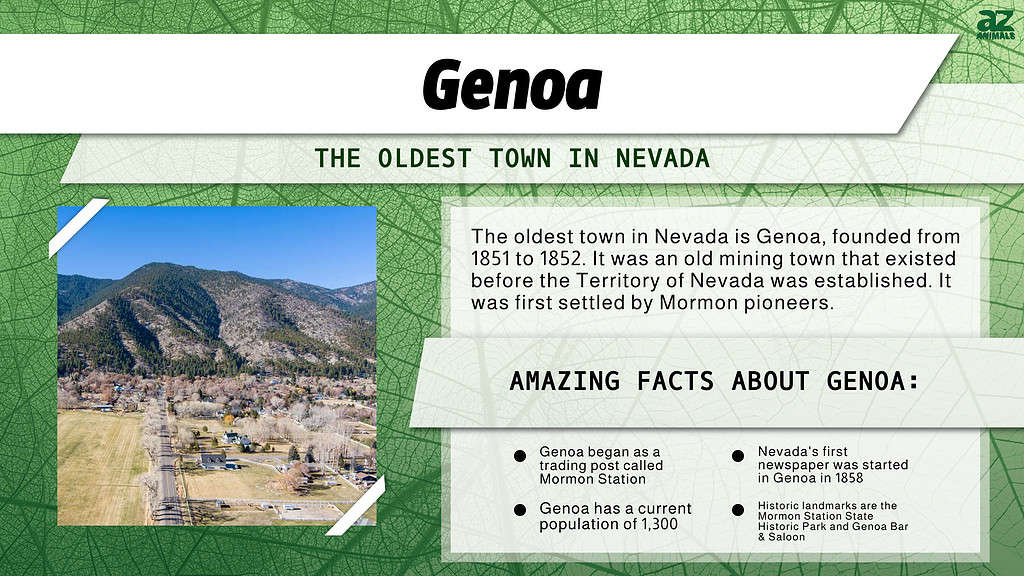
The oldest town in Nevada is Genoa, founded from 1851 to 1852. This old mining town is in Douglas County in Western Nevada. Genoa existed before the Territory of Nevada was established. It was first settled by Mormon pioneers.
The History of Genoa
Genoa first formed while the area was in the Mexican territory of Alta California. It was a trading post named Mormon Station. The settlement expanded quickly as it was a popular resting spot on the Carson Route of the California Trail. By 1852, within the community was a blacksmith shop and sawmills. Fun fact, the state’s first newspaper was started in Genoa in 1858 but moved to Virginia City in 1860. Virginia City is another old permanent settlement in Nevada.

The oldest town in Nevada is Genoa.
©Gchapel/Shutterstock.com
About Genoa
Genoa has a surface area of 9.19 square miles. The population of this old unincorporated town is about 1,300. It’s on the western edge of the Carson Valley. In Genoa is the Genoa Historic District. It’s a charming area filled with old Victorian-style buildings. Also in Genoa is the Mormon Station State Historic Park, also known as the Mormon Station.
Where Is Genoa Located on a Map?
The oldest town in Nevada, Genoa, sits in the western part of the state in Douglas County. Given that it lies next to the Sierra Nevada mountain range, it’s a great destination for picturesque scenery. Roughly 12 miles north of Genoa is Carson City, the state capital, while a winding 20-mile drive will take you to the famous Lake Tahoe in the west.
Best Time to Visit Genoa
The best time to visit Genoa, Nevada is from May to September. It’s busiest during summer. It’s also important to note that Genoa is a very hot town. In the summer, highs above 90 aren’t uncommon. You can also visit Genoa, Nevada in the winter if you’re looking to beat the heat, but it may be chilly. In December, the average low can be as cold as 22.1°F. Winter is excellent to visit too if you’d like to see snow-covered historic buildings.
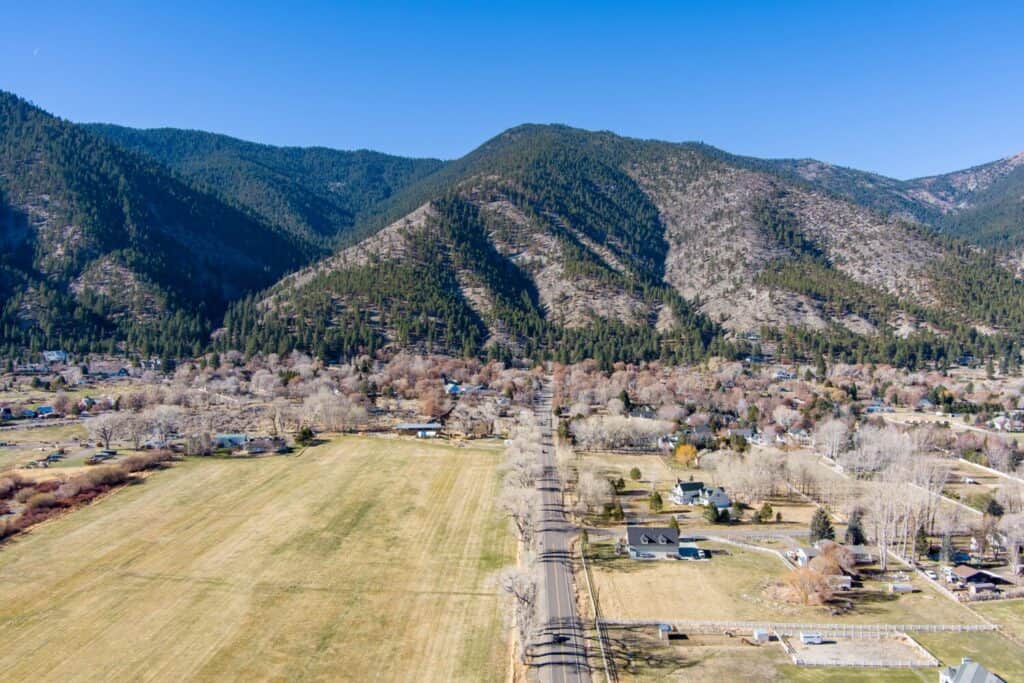
Genoa is over 150 years old. It’s home to about 1,300 residents.
©Gchapel/Shutterstock.com
Things to do at the Oldest Town in Nevada
So, what is there to do in Genoa, Nevada? You won’t grow bored while exploring this unique historic town. For example, you can spend hours exploring the Mormon Station State Historic Park. In this park is a museum designed as a replica of the log cabin trading post. You can also visit the Campbell Homestead, a historic home built in the 1900s.
Apart from this state park, you can also visit the Genoa Bar & Saloon. This old bar is the oldest in the state which opened in 1853. It’s quite a sight to see. Inside the old bar are countless original oil paintings and an original wanted poster from 1865 looking for President Abraham Lincoln’s then-unknown killer.
Wildlife You’ll Find in Genoa
While exploring the oldest town in Nevada, you may run into some wildlife. This old western town is surrounded by mountain peaks and near Lake Tahoe, so it’s a great place to view wildlife. Follow along to discover some animals you may see in Genoa.
American Robin
The first animal on our list is likely the most common, the American robin. These large vibrant songbirds are common throughout the state. They are migratory birds native to most of North America. There are about seven subspecies of American robins. These large robins mainly eat insects and small fruits and berries. They are great foragers with excellent eyesight.
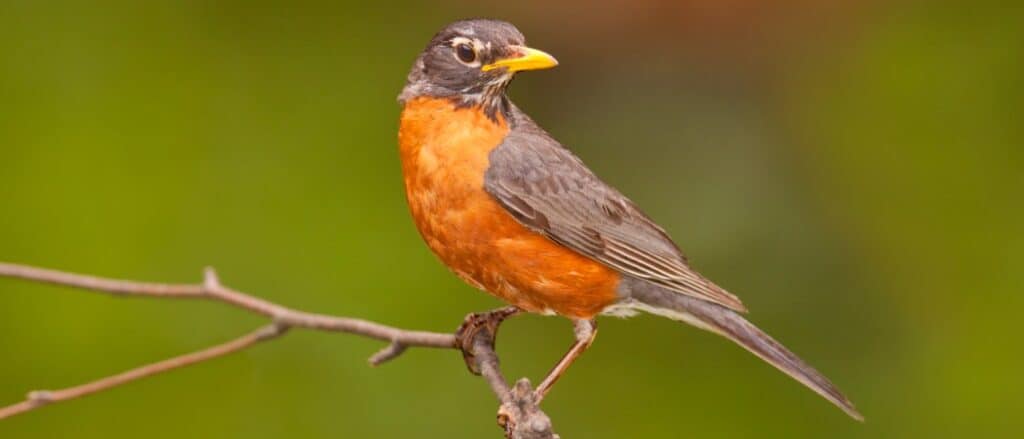
American robins are common in Nevada.
©iStock.com/Silfox
Northern Leopard Frog
The next animal on our list is the northern leopard frog. It’s native to parts of Canada and the United States. This spotted frog species is listed as Least Concern on the IUCN Red List. It’s about 4.3 inches long, not including their stretched-out legs. Northern leopard frogs are mainly green to brown with spots, although some variation does occur.
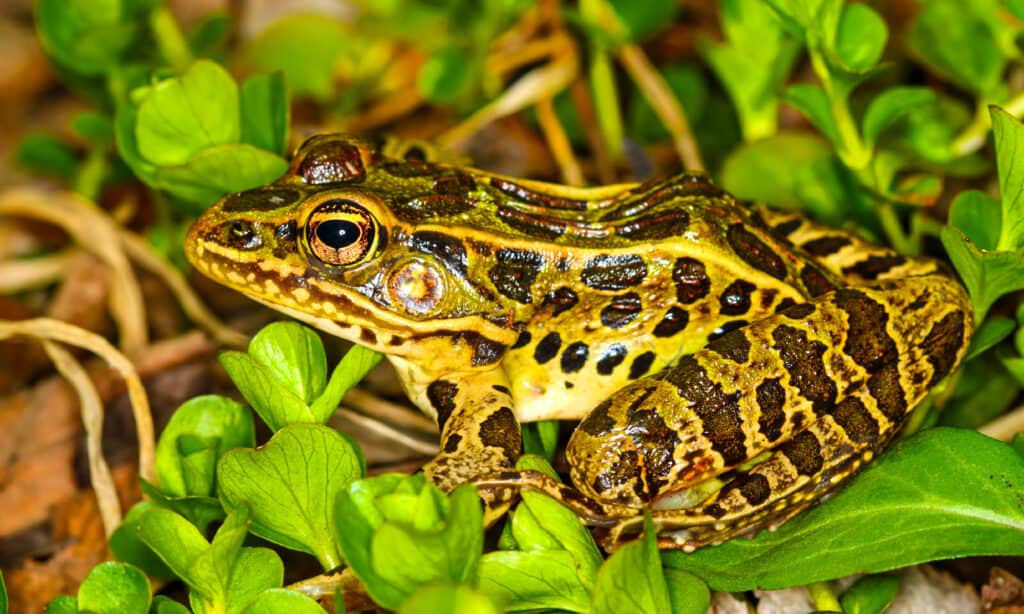
Northern leopard frogs are large, about 4.3 inches long, not including their legs.
©Jason Patrick Ross/Shutterstock.com
American Mink
Another animal you may see in Genoa is the American mink. American minks are semi-aquatic animals with a large range. They are native to North America but are found in Asia, Europe, and South America. They range a lot in size, but male American minks are generally about 13 to 18 inches long.
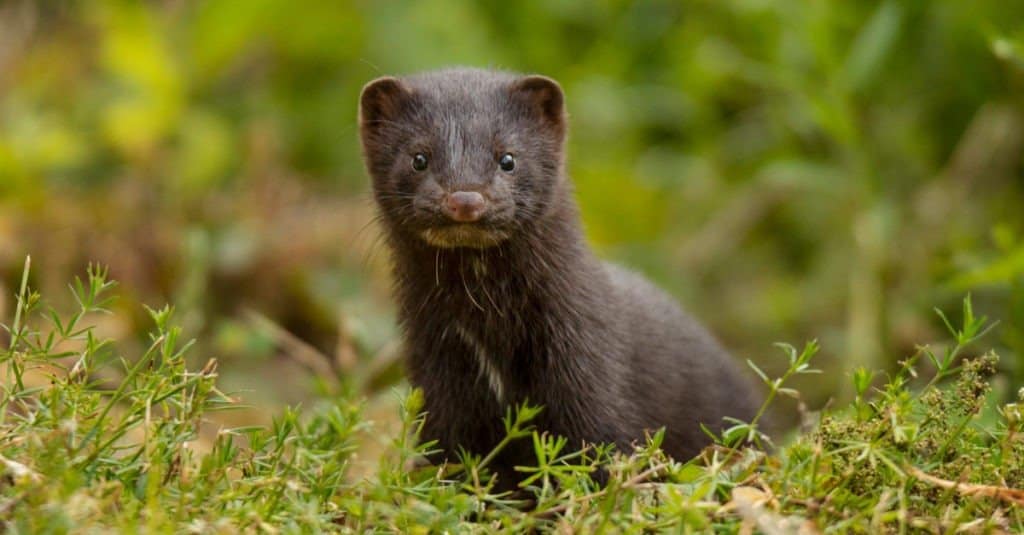
American minks are native to North America but have been introduced to many other continents.
©An inspiration/Shutterstock.com
Coyote
Also in Genoa, Nevada are coyotes. Within Nevada, experts estimate there are between 50,000 to 110,000 wild coyotes. These medium-sized canines have a large native range. They also live in many habitats. You can find them deep in dense forests or near neighborhoods. Some farmers label coyotes as nuisances as they eat livestock like ducks and chickens.

In Nevada, there are up to 110,000 coyotes in the wild.
©Warren Metcalf/Shutterstock.com
The photo featured at the top of this post is © iStock.com/Oleksii Liskonih
Thank you for reading! Have some feedback for us? Contact the AZ Animals editorial team.






